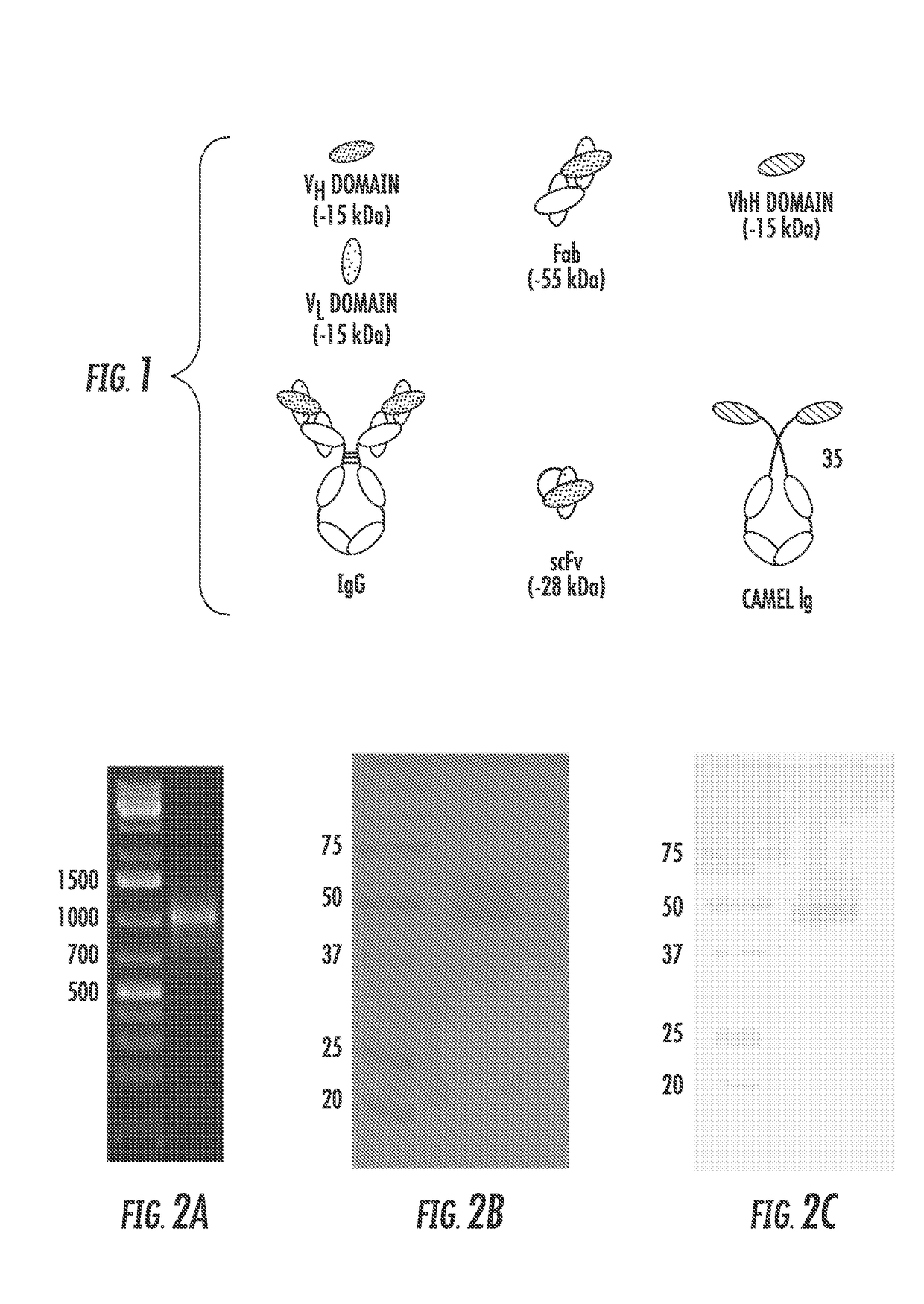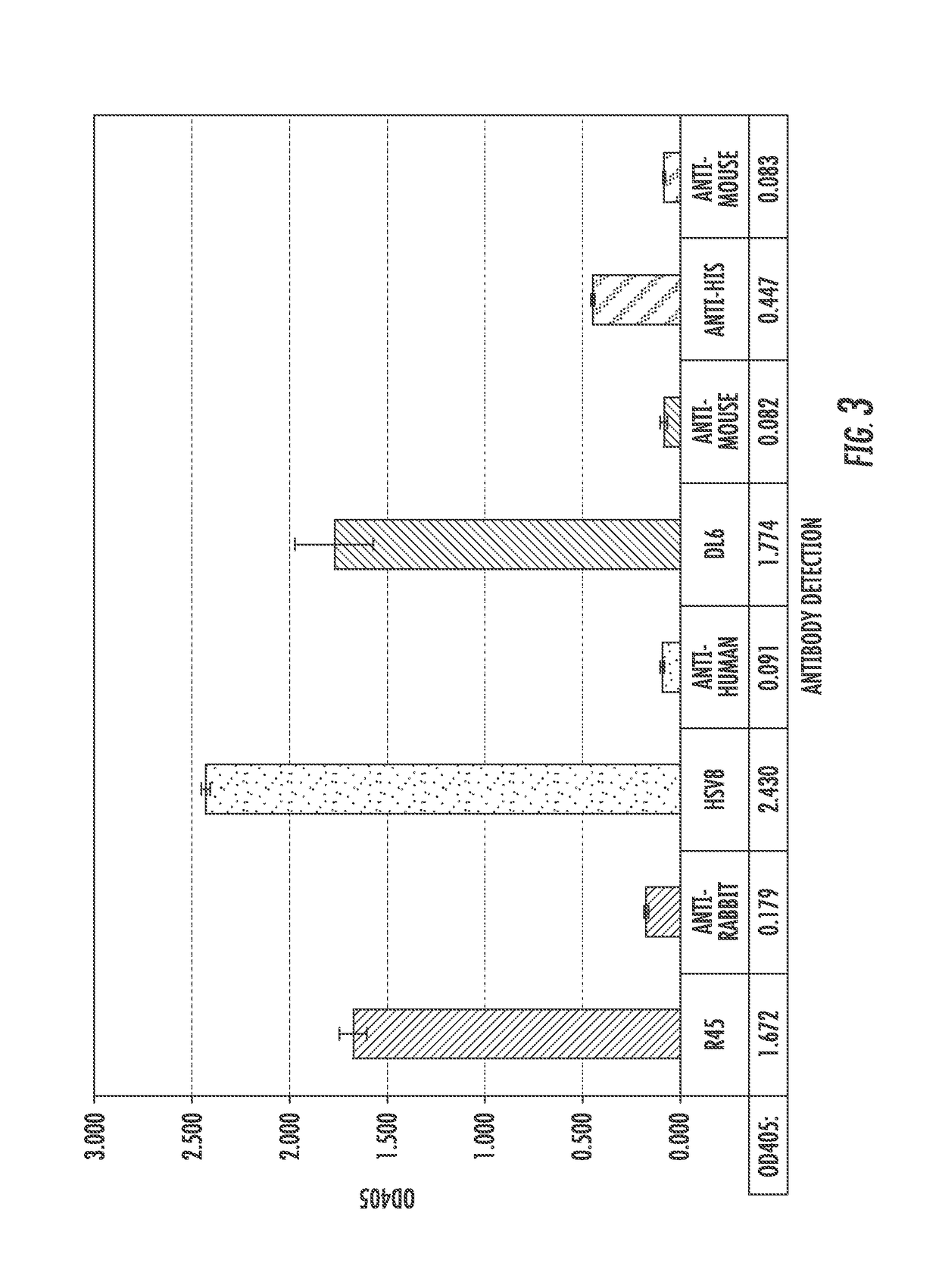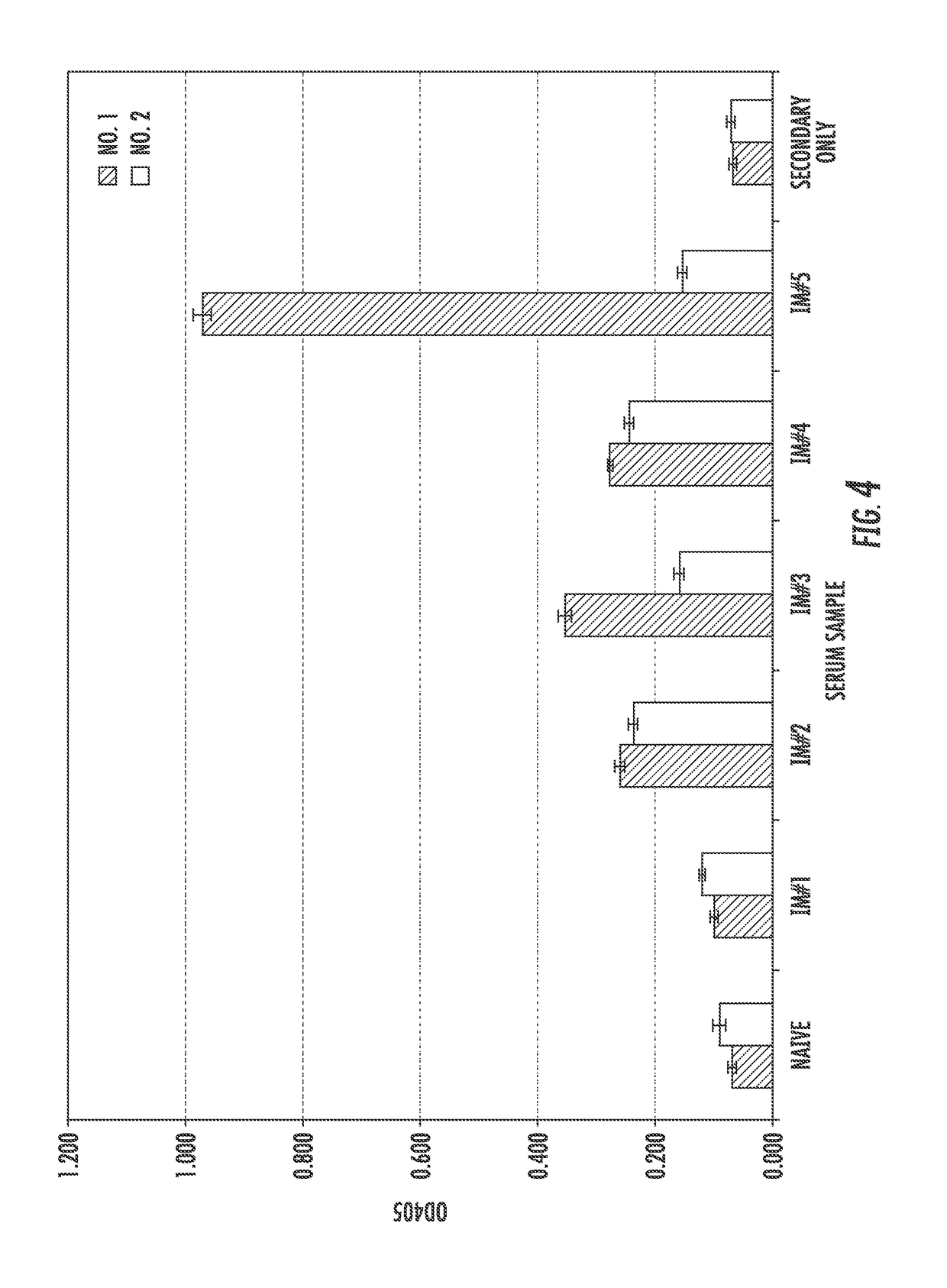Antimicrobial compositions comprising single domain antibodies and pseudomonas exotoxin
an antimicrobial composition and single-domain technology, applied in the field of antimicrobial compositions comprising single-domain antibodies and pseudomonas exotoxins, can solve problems such as cell death
- Summary
- Abstract
- Description
- Claims
- Application Information
AI Technical Summary
Benefits of technology
Problems solved by technology
Method used
Image
Examples
example 1
Expression and Purification of Recombinant gD2 in Pichia pastoris
[0139]The extracellular domain of gD2 was amplified from the HSV-2 186 genome (FIG. 2A) and cloned in to the Pichia pastoris expression vector pPIC9 for expression and purification (Protein Expression and Purification 25, 400-408 (2002)). The size and purity of the purified gD2 was verified by separation with SDS-PAGE and staining with Coomassie (FIG. 2B), as well as by Western blot using a polyclonal anti-gD antibody (FIG. 2C). A band approximately 48 kDa was detected with both methods, somewhat smeared due to the variable glycosylation pattern from P. pastoris, as has been reported previously. gD2 was successfully detected by ELISA using a panel of conformation and non-conformational anti-gD2 antibodies (FIG. 3), indicating that gD2 was successfully purified and suggests that it is folded correctly.
example 2
Monitoring Antibody Response of gD2 Immunized Llamas
[0140]Two llamas, Llama No: 1 and Llama No: 2, were immunized five times with gD2, and after each immunization the animals were bled to obtain serum samples. The induction of anti-gD2 antibodies was determined using an ELISA. As shown in FIG. 4, serum from both llamas demonstrated reactivity to gD2 following the second immunization compared to serum collected prior to immunization and after the first immunization. The highest reactivity to gD2 in serum collected from Llama No: 2 occurred after the fourth immunization. Serum from Llama No: 1 had similar reactivity to gD2 as Llama No: 2, except there was a dramatic increase in gD2-reactivity following the last immunization (FIG. 4). In addition to the ability to bind gD2, the serum was also tested for the ability to neutralize HSV-2. While serum from Llama No: 2 had no significant neutralizing capability, Llama No: 1's serum obtained after the fourth and fifth immunizations generated...
example 3
Construction of VHH / T7 Phage Display Library and Biopanning Against gD2
[0141]Based on the ELISA reactivity and neutralizing capability of the serum, VHH genes were amplified from cDNA generated from the PBMCs isolated after Llama No: 2's fourth immunization and Llama No: 1's fifth immunization (FIG. 6). The amplified VHH genes were ligated into T7 phage vector to generate libraries with initial diversities of 3.9×107 pfu for Llama No: 2 and 1.98×107 pfu for Llama No: 1. For Llama No: 2, after the first round of biopanning, the titer of eluted phage increased stepwise following each round of biopanning, indicating a gradual enrichment for VHH-phage binding to gD2 (FIG. 7). Titers of eluted phage from Llama No: 1's library, however, reached saturation after only two rounds of biopanning (FIG. 7), a pattern that was consistent despite repeated attempts with different conditions (data not shown). This meant that Llama No: 1's library was already dominated by a population of phage reacti...
PUM
 Login to View More
Login to View More Abstract
Description
Claims
Application Information
 Login to View More
Login to View More - R&D
- Intellectual Property
- Life Sciences
- Materials
- Tech Scout
- Unparalleled Data Quality
- Higher Quality Content
- 60% Fewer Hallucinations
Browse by: Latest US Patents, China's latest patents, Technical Efficacy Thesaurus, Application Domain, Technology Topic, Popular Technical Reports.
© 2025 PatSnap. All rights reserved.Legal|Privacy policy|Modern Slavery Act Transparency Statement|Sitemap|About US| Contact US: help@patsnap.com



